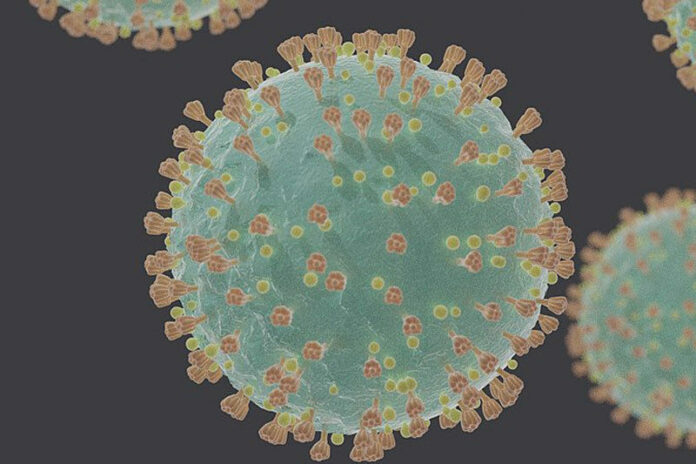County remains off the governor’s watch list for now
As COVID-19 cases in Sonoma County spiked late last week, causing the single-highest jump in a 24-hour period yet, the county is bracing for potentially having to move back a few rungs on the reopening ladder. Though Sonoma County is off the governor’s watchlist at present, the current trend is spurring fears that it’s only a matter of time before Gov. Gavin Newsom puts the county on the list.
The number of cases in Sonoma County as of July 4 is 1,359, with 729 active, 620 recovered and 11 deceased. This number represents a 92-case single-day increase, the highest recorded yet within the county.
Other recent statistics show that approximately 3% of those tested test positive and 5% end up hospitalized. According to the statistics, the top clinical symptoms reported in the county are headache and fever. In addition, 90% of cases are in people with no underlying conditions. The top underlying conditions are smoking and chronic lung disease.
In terms of ethnicity, 73% of positive cases in Sonoma County are Hispanic/Latino, with 23% being white. Fifty-three percent of cases are believed to have been transmitted by close contact, while 13% are community transmission with the rest still under investigation or travel-related.
The majority of cases — 57% —are in the central part of the county (Santa Rosa, Cotati and Rohnert Park) with south county (Penngrove and Petaluma) at 20%, east county (Glen Ellen, Sonoma, Kenwood) at 9%, north county (Windsor north to Cloverdale) at 7% and west county (Guerneville and Sebastopol) at 3%.
Men are catching it a slightly higher rate then women (52% to 48%). The top job for people who test positive is services and sales, such as cashiers and salespersons.
The case spike follows a trend nation-, state- and Bay Area-wide, with cases statewide jumping up 2.1% (5,225) in the same 24-hour period.
In the bay area, Alameda County leading the way locally with 6,855 total cases, followed by Santa Clara County with 5,273. Santa Clara leads the death toll, with 161, followed by Alameda with 140.
In an interview conducted by Chair of the Board of Supervisors Susan Gorin on July 3, Dr. Sundari Mase, the county health officer, said, “As of today 19 counties in California are having to roll back their openings … and it’s noteworthy that some of the largest and most populous are here in Norther California. So, that should give us pause as to our own vulnerability here in Sonoma County.
“My goal is to not go backwards, I want to keep businesses open but if people don’t follow directions and protect each other, we risk having to close things back up due to outbreaks, with more people getting sick, more hospitalizations and more deaths. For some of us what is at stake is our very lives. As of today, we are not on the state watch list, but if cases continue to rise, we will end up on that list,” she concluded.
The watchlist
While there are no exact metrics that cause a county to be placed on the watch list, there are a list of policies and procedures that help guide the governor’s decision making. That list includes:
- Identify the drivers of the changing situation and whether it is increasing confirmed cases, uptick in hospitalizations and ICU patients, outbreaks in congregate settings such as skilled nursing facilities (SNFs) or jails/prisons, or community transmissions in settings such as churches, workplaces, or agriculture, and amongst other specific populations experiencing disease disproportionately.
- Review of the strategies already in place by the local health department and community to address each of the areas of concern, including locally defined plans and protocols published through variance attestations.
- Discuss additional steps that should be taken in various environments such as more aggressive testing strategies, any issues with contact tracing, need for healthcare resources or infection control strategies.
- Discuss issues that may develop as a result of currently identified issues, e.g. additional SNF or community outbreaks leading to a healthcare surge.
- Discuss any gaps in resources and clear articulation of any additional roles for the state and/or local jurisdiction. Resource gaps should include commodities such as personal protective equipment (PPE), testing supplies or other consumables.
- Review of business sectors that are open and whether any other state agencies may be needed in the discussion given their ownership of the facility or role in regulating that business sector.
- Review of local containment triggers and consideration of renewing non-pharmaceutical interventions (NPI).
As an example of how these polices are applied, our neighbor to the south, Marin County, which was placed on the watch list last week, is listed as having the following reasons for its inclusion: “Marin County is experiencing elevated disease transmission, increasing hospitalizations and limited hospital capacity. Drivers of this include the county experiencing an outbreak at San Quentin State Prison within their jurisdiction; increased community transmission among essential workers; and outbreaks in congregate settings and Latinx neighborhoods.
“Key actions to address concerns include 1) coordination and communication between local health department, CDPH, and California Department of Corrections and Rehabilitation (CDCR) to mitigate outbreak at San Quentin State Prison; 2) enhanced infection control practices and testing at residential care facilities for the elderly (RCFE) and skilled nursing facilities (SNF); and 3) partnerships with community-based organizations to increase testing, access to care and supports for vulnerable populations.”










